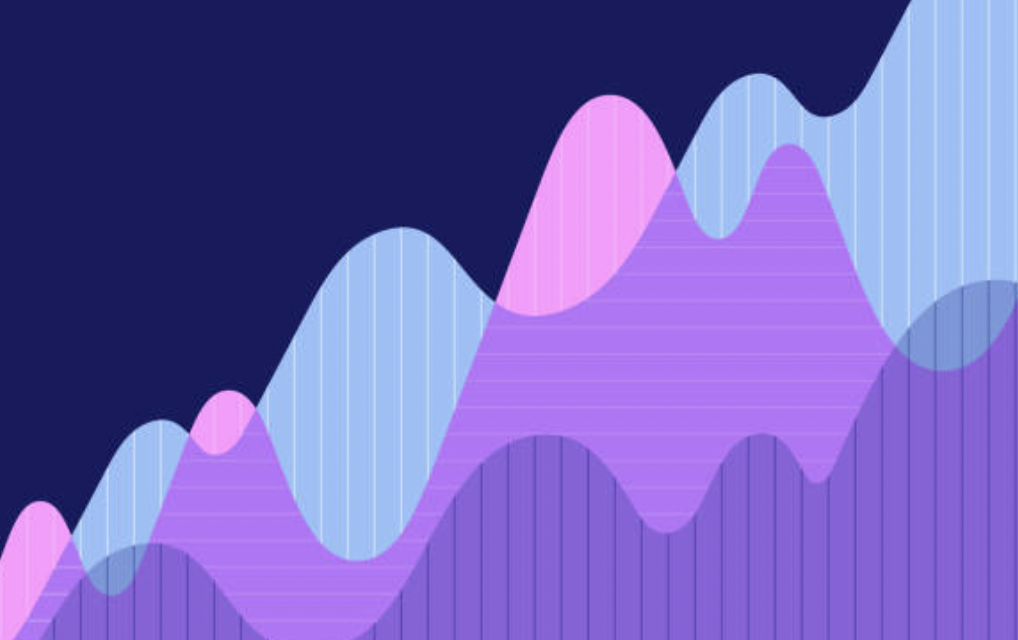
Hadwin Clarke
Nov 25, 2021 16:01

Using strategies for trading is a must these days. It requires you to learn its every know-how. Have you ever observed successful traders? If yes then, you must have noticed them using a trading strategy called the bear flag pattern strategy. To your surprise, this bearish strategy can benefit you too. Feels better? But how will you benefit from it? And by the way, what is this bearish strategy? Yeah, so many queries like this. No worries because we got your back. This article will prove a complete guide of the pattern for you. So, waiting for what? Let's get into the details.
Before going through a specific pattern, it's necessary to understand the basics. Patterns are the tools used by traders for additional aid to manage their strategies for trading. These patterns can be either reversal or continuation.
Reversal patterns indicate the change in the directions of market trends. At the same time, continuation patterns indicate the preceding of trade in the same direction.
When it comes to flag patterns, these are short-term ones in which you can spot the formation of a flag. Flag patterns are said to be short-term because the flag zone doesn't last long.
Flag pattern charts can be both; bearish or bullish. This guide will talk about the bearish flag pattern as it is popular as the most simple and reliable one.
As the term reveals, it's a flag-shaped pattern in a bearish chart. In the case of bearish trade charts, the pattern will appear upside down, an inverted form of a bullish flag pattern. It is formed when the market trends enter the consolidation state to adjust the new prices. In other words, consolidation is the exact point bears chart where a flag pattern appears.
If you're wondering how it looks? Initially, you'll notice a decreasing trend that will become constant for a short interval. After that, it'll proceed again in the downward direction.
As you're now familiar with the bear flag pattern, let's see the working mechanism of the pattern.
There are two key points of how it works
Strong momentum moves (large range candles).
Weak pullback (small range candles).
In this phase, sellers can quickly push the prices lower, due to which the candles are in a more extensive range. However, it clearly shows that sellers don't experience any buying pressure when the trend moves with solid momentum. In short, the sellers are in control.
This is said to be the consolidation phase. It occurs when traders in short positions start making a profit. Here the prices are pushed higher due to the buying pressure. Otherwise, the trend would have remained the same.
For this purpose, look at its definition again, "After a downward price movement when the prices enter in consolidation state then its flag pattern is formed." During the analysis of the definition, you'll notice the components of this pattern. Keeping in view these components, one can trade successfully with the bear flag pattern on forex charts. Following are the three components
The downtrend.
The consolidation period.
The breakout.
What to do with these components? Here are the steps to identify a bear flag pattern with the help of its integral components;
Look for a sharp downtrend in the asset's price. Then, it'll form the flagpole.
Find the consolidation phase, which should be between two parallel lines. It'll form the flag.
Observe the breakout which should be penetrating the supporting line. It'll show the continuation of the pattern.
You can't just directly go for trading after identification of the pattern. You've to see if it will be worth it or not. Do you know what kind of bear pattern profit yields? Well, the one whose flag is short with constant or a bit sloped upwards trend. Also, it places the candlestick of breakout on the bottom line. It'd be beneficial because these properties ensure the continuation of the bear trend in the pattern.
This is the most asked question as the bear flag is the most popular price action pattern. It's time to walk through its answer. As mentioned earlier in the identification section, you have to point out the right context first with identifying the flag pattern. A sharp decline is a strong evidence for this. Then, point out the resistance line and supporting line. If they are in a narrow range, then you're proceeding in the right direction. Once the consolidation is definite, you need to find out the entry positions. Don't jump into the trade immediately; wait to ensure that the trend will continue (the decline). After confirmation, look for your stop-loss point. Yes, it's also essential before entering the trade because you'll be in competition with other traders in the market. Placing a stop-loss lessens the risks significantly as in this way, you reserve the right to exit the trade if there is any loss expected. After the establishment of protection, you should look forward to profits. The take profit is targeted at the same price distance as measured down the height of the flagpole. This is the point in a bear flag pattern trade where you can take advantage of it.
Does this strategy make sense to you? Alright, keep in mind that these were the rules for a sell trade.
The general rule for trading flag patterns is; "trade in the direction of the previous trend."
You must be thinking about why are we relating volume patterns with bear flag patterns? Volume patterns can be used in combination with flag patterns. This step will provide you with more precise directions to proceed in the trade. It is because the volume is the best indicator for the strength of trade.
In the bear flag, there will be enhanced volume along with the downtrend. While there should be a sharp declining volume during the pullback (consolidation) in an ideal pattern. The bear flag pattern is indicated by the negative development of volume. These fluctuations in volume confirm the price patterns of stocks & assets, also confirm the downtrend continuation.
You can use some other indicators, too, like moving average (MA) or any else.
A lot of indicators can be found out there. These tools can help you to take the right steps. Have a glance at a few indicators.
Measure the distance between the pattern and the moving average. It should be a little narrow. Lager distance of MA is not recommended for trade. There'll be more chances of trend reversal after the consolidation state when a large distance is measured. Or it'll surely reverse soon after the little continuation.
Moving average correlates with the time frame. If you trade on a high time frame, apply a moving average in the range of 100 to 200. If you trade on a low time frame, go for the short periods moving average like 9, 12, and 20. In case you want to trade for a medium span, apply a moving average of period 50.
Fibo retracement tool is also famous for trading strategies. It is used to determine the anticipation of pullback. When Fibo levels are applied to the chart, you can predict the location where the downtrend will continue.
The right time can prove a real game-changer for you. To figure out the right time to enter a trade, you need to understand the logic of this trade first. The psychology of bear flag pattern trade lies in the imbalanced supply and demand ratio in the market. What is its logic? After the primary sell-off, those who missed the opportunity feel the terror of loss and begin to sell. As a result, there will be more sales in the flagpole phase. As soon as the trade enters the consolidation zone, the traders stop there to wait for the incline again. On the contrary, the pattern continues to decline due to more supply than demand.
How does it tell you about the right time? That continuation point is the perfect time for your entry. It provides you with two chances for entry. The first one is for aggressive traders who seek the maximum profit. They make entry at the resistance line. However, there are more risks for them as the continuation is still not confirmed at this point. While the second entry is for the conservative traders. They make entry at the supportive line right at the time of breakout. This one is considered safer as the continuation is certain at this point. We'd recommend you post one. Otherwise, before you hop for the former one, make sure you can afford to lose the investment.
The right time is not only about the entry. It also covers your exit time. Why this? Because the downtrend of the pattern wouldn't continue, you will be at a higher risk of loss. When to exit then? Right at your take profit target, which you estimated after placing the stop loss.
Now you got it that discovering the logic behind the scenes makes you a pro trader from a new trader.
Although you understand your movements in the bear flag pattern, there is still an exact technique to follow for a trade. You can time your entries with precision using two key points;
When prices form a bear flag, you can short the break of the swing low. You should make your entry after the breakout of prices below the swing low.
When prices make a sloped bear flag, you can shorten the break of the trend line. Therefore, you should make your entry only after the break out & closing of price below the trend line.
If you are thinking about finding a technique to maximize your profits in conservative mode, here is what you can do about it; you can use the price projection method for it.
Measure the height of the flagpole formed before the pause. Use it by mirroring it. Then, project the measured length downwards on the chart, right after the flag where penetration of the support line took place.
Otherwise, you can use the trailing stop loss method. Usually, when a trader shorts the bear flag, he notices the prices are below the 20 moving average. It means he should trail his stop loss with the 20 MA.
Like every other strategy, the bear flag pattern also has its cons and pros. Being practical, nothing can be perfect. So, before getting into a trade, the trader should be aware of all the possibilities. Let's explore them one by one.
Following are the advantages of a bear flag pattern;
The major benefit is that its continuation property plays the role of extension of profit opportunities for the traders. If you miss one selling point, you'll be able to avail another one shortly.
One advantage that no trader can ignore is that it shows that market prices will continuously go down.
Another one is that it gives straightforward signals to interpret the direction of its trend.
When used along with the volume patterns, prices and directions can be validated.
Also, one can easily spot the current stage of the bear flag pattern trade.
On top of that, the breakout zone ensures our profit, making it easy to play.
The consolidation phase is itself a plus to advantages as its 38.2% retracement favors the traders.
It'll work doesn't matter which time frame you are using.
Also, you can use it with any trading instrument/tool.
It provides entry & stop levels for your investment security purposes.
Hence, it's safe to call it the strongest technical pattern.
Even though the bear flag pattern is the most popular in trading, it has some disadvantages. You can go through them below;
The most important point to notice is that its consolidation zone can sometimes completely reverse the trend's direction. Definitely a loss!
Another demerit is when the consolidation state begins to drag on. Again, it's not a positive sign for sellers as they might lose the momentum while it'll benefit the buyers as they might consider it a reversal.
There are rare chances for it to take place.
You can't use every bear flag pattern. You have to identify the right one.
Also, when the new traders get to know this pattern, they jump into short positions without any delay. It lands them directly into the huge loss, making them wonder that they took it as a piece of cake. Meanwhile, it turned out to be a walnut with a hard shell.
What do you think now; bear flag patterns are useful or not?
To sum up, we'd say that a bear flag pattern trade can be a great profitable strategy for you if you trade inappropriate conditions.
All you have to do is find answers to these questions; what's the trend in the market? Where should the entry be? Where is the stop-loss point? And what will be your exit location?
In addition, avoid the patterns with overstretched flag phase and those with 50% retracement.
One thing to remember, do your own testing because neither the history nor the provided information will guarantee a successful win for you.
Here is a question; how have you been trading the bear flag pattern chart?

Nov 25, 2021 11:36

Nov 25, 2021 16:13